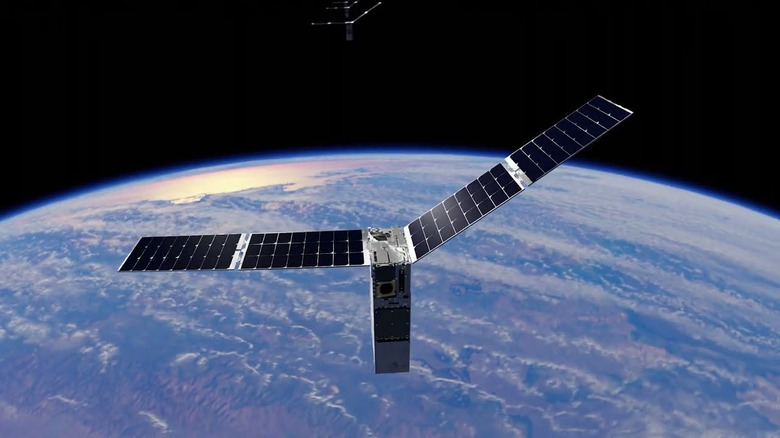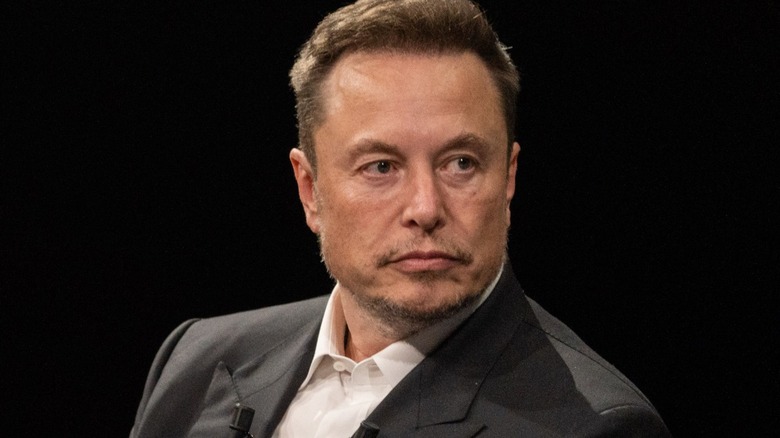Starlink Explained: The Next Frontier In Internet Technology And How It Works
While some parts of the planet are used to high-speed internet, that isn't the case in other regions. According to the United Nations, a staggering 2.9 billion people — 37% of the world — have never even used the internet. One of the main reasons for this is a lack of infrastructure, but Starlink is looking to change that.
Starlink is a satellite network and internet provider developed by SpaceX, the American spacecraft manufacturer run by Elon Musk. Unlike other broadband connections that connect via cables, Starlink internet is beamed down to people's homes using thousands of satellites in Earth's orbit.
Starlink aims to connect people to the internet who live in remote or isolated parts of the world where traditional providers don't exist. Currently, the technology can reach most parts of North and South America, Europe, and more remote locations like Northern Canada and parts of Brazil. Soon, the company aims to launch its service across several African nations, including Morocco, Chad, and the Democratic Republic of Congo.
How does Starlink internet work?
The Starlink project originally started in 2014, and uses satellites to connect those who live in remote or rural locations to the internet. Using thousands of interconnected sites called mega-constellations, Starlink provides internet to large swaths of people worldwide.
Unlike traditional broadband providers, which utilize large geostationary satellites orbiting the Earth at around 35,786 km, Starlink uses smaller, low-orbit satellites that orbit at 550 km. Internet is then broadcast directly from the satellites into a phased array antenna, which looks similar to a satellite dish installed around the user's home.
On May 23, 2019, Starlink launched its first satellites into low orbit, and today boasts over 1.5 million active subscribers. According to Space.com, there are over 4,519 Starlink satellites in orbit today.
In terms of performance, Starlink has variable internet speeds. According to a report by Ookla, Starlink internet clocks in at a median download speed of around 65Mbps, down from the Starlink internet median speed of 104.97Mbps in 2022. This also sets it slightly slower than typical 5G wireless internet speeds from providers like T-Mobile or Xfinity. Still, this is faster than average speeds from other satellite-based internet providers.
It's also important to note that, according to the report: while internet speeds may not be impressive compared to other traditional ISPs, overall consumer satisfaction for the service is higher for metro and non-metro areas when compared to its broadband competitors.
How much does Starlink cost?
Starlink was initially marketed as an affordable internet service at $99 per month, but has since increased its pricing. The monthly cost for the service is around $120, though prices may continue to fluctuate. Obtaining Starlink service also includes a one-time hardware fee of at least $599, plus a variable shipping fee for the phased array antenna installation.
In addition to the standard service, Starlink also offers a Priority option that boasts high-speed priority service for up to 1TB of data, and costs $250 per month. The company also offers High-Performance hardware for businesses and users located in polar regions, which boasts better performance and can withstand more extreme temperatures. Installation for that equipment runs around $2,500.
That makes Starlink's internet service slightly more expensive than the average high-speed internet, at $74.99, per Consumer Reports. That being said, Starlink is meant to reach places where other ISPs can't, and is the fastest option for many users in remote locations.
Starlink controversies explained
While the concept of Starlink is innovative and will provide more of the world with high-speed internet, it hasn't been without controversy. In February 2021, Elon Musk claimed on Twitter that speeds for Starlink would reach 300 Mbps by the year's end, which according to the Ookla report, is far above the actual average performance.
However, exaggerations about Starlink's performance are the least severe of the criticisms. Perhaps more concerning is the scientific community's unease about the company's low-orbit satellites, which astronomers fear could interfere with observations of the universe. Others see the satellites as the most likely source of a collision hazard with Earth.
Questions about the service's overall performance have also been made, with the Federal Communications Commission canceling Starlink's $885.5 million in subsidies to expand to rural areas due to it not meeting program requirements. The FCC pointed to concerns that the service could not meet speed goals and may not be affordable.
Only time will tell whether Starlink will live up to early expectations and provide an affordable internet option to more remote locations across the globe. With additional Starlink satellites being launched as recently as August 7, 2023, and an ever-growing customer base, it doesn't look like the company intends to stop growing anytime soon.



